My last name is a dead giveaway to my German ancestry. But even though I lived in Germany four years, speak the language, and began my freelance travel-writing career there, I never considered myself Teutonic. For that, I had to go to the Missourian village of Hermann to I realize how German I actually am. For while I might embrace spontaneity, at heart I love order and neatness. Hermann virtually shouts its German origins, from restaurants serving German dishes to flower boxes to well-crafted 19th-century brick homes and businesses hugging the curbs of tidy streets, just like they do in the homeland. The more I learned about the German in Hermann, Missouri, and its history, from the industriousness of its early citizens to its meticulously planned gardens, it was almost like I could see myself from the inside out. Of course, learning that Norton grapevines were planted as early as 1843 and that Hermann was once home to the second-largest winery in the country are what sealed the deal. These were my kind of people.

The Founding of Hermann, Missouri
Hermann was not founded by happenstance (oh, no, that would never do). Rather, Hermann was conceived by the German Settlement Society of Philadelphia to serve as a bastion of German heritage and traditions, fueled by the fear that German immigrants and their children were too easily integrating into their New World surroundings and losing both their native language and customs. A self-sufficient Fatherland on the western frontier was deemed just the remedy, and in 1837 the Society sent out a scouting party led by George Bayer, a schoolteacher who had emigrated from a city on the Rhine River. Bayer found what he was looking for in the Rhine-like hills of Missouri: 11,000 acres flanked on one side by the wide Missouri River and on the other sides by steep, rugged hills. A romantic setting, to be sure, but not one that might suggest a successful commercial, industrial, and farming community.
Meanwhile, back in Philadelphia and unaware of the chosen settlement’s challenging terrain, folks were busy laying out designs for what they assumed would be a flat city on a strict grid, with broad streets, squares, and its main Market Street optimistically 10 feet wider than the main street in Philadelphia. They named it Hermann, after Hermann the German (Arminius in Latin), a national hero who in 9AD led Germanic tribes in the defeat of Roman legions. Advertisements offering city lots or 40-acre farms for sale went out in the eastern part of the country and in Germany, attracting craftsmen, farmers, wine makers, brewers, laborers, and professionals.
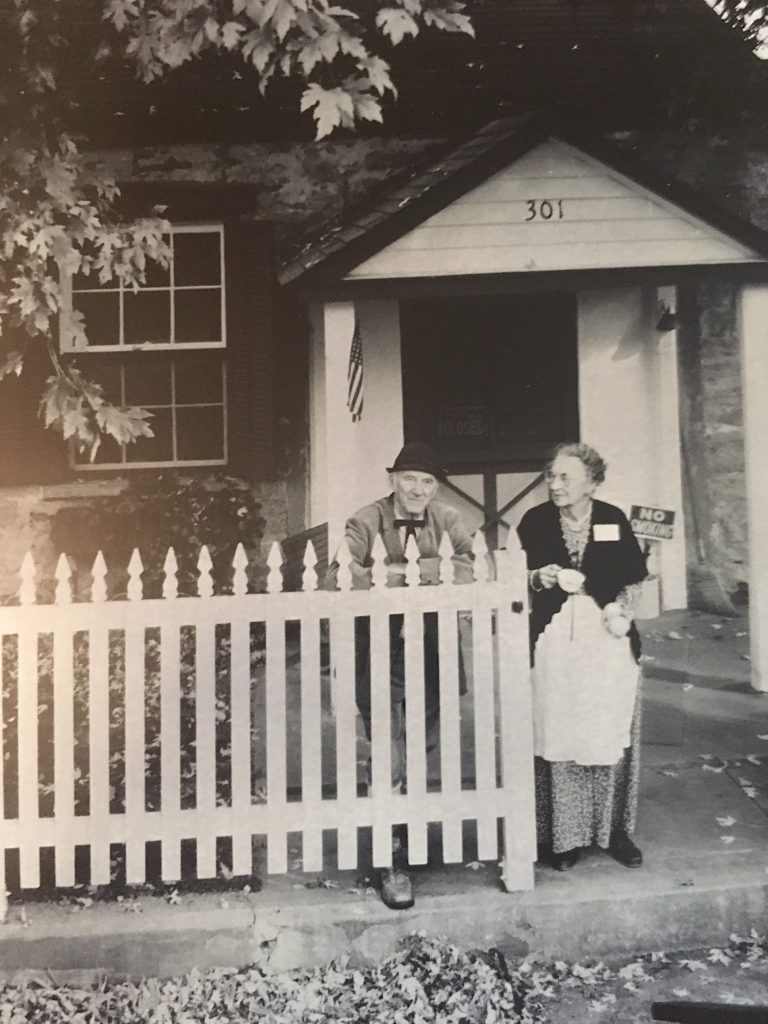
But when the first 17 settlers arrived during in the harsh winter of 1837, they were dismayed to discover an inhospitable environment and a rocky topography, their dreams of utopia dashed. As the appointed land agent, Bayer was expected to do everything, including the surveying and selling of lots, arbitrating disputes, and establishing a school. Although Bayer probably did his best, colonists complained so bitterly that he was relieved of his duties in 1838 and died a year later, some say of a broken heart. As if that weren’t enough, poor George was buried in a remote section of the cemetery.
Perseverance Prevails
Yet German fortitude and hard work prevailed. By 1839, Hermann’s population had grown to 450, with diligent colonists clearing land and utilizing advanced farming techniques brought from the old country to carve out prosperous farms on what other pioneers had deemed substandard. They replaced wild grapevines growing on the rugged hillsides with their own varieties. By the 1850s, 1,500 people lived in Hermann, which bustled as one of the busiest ports on the Missouri River. Taverns, churches, brick and half-timbered homes, the largest mercantile store between St. Louis and Kansas City, and businesses churning out everything from bread and bricks to the first German newspaper west of the Mississippi spoke to the city’s success. Private funds paid for the town’s handsome two-story brick German School, where classes were conducted in English and German, and Casconade County Courthouse, one of only two privately funded courthouses out of some 3,000 in the country. But it was wine that put Hermann on the map.

Wine Saves and Loses the Day
Just 10 years after its first vineyards were planted and the hillsides were riddled with hand-dug cellars to preserve wine at a constant temperature, Hermann celebrated its first Weinfest, attracting visitors arriving by steamboat from as far away as St. Louis. By the turn of the century, Hermann was producing more than three million gallons of wine annually, making it the town’s major source of income. In addition to larger wineries, one of which grew to become the second-largest winery in the country, there were at least 60 small wineries in the area. Pretty much every farmer grew grapes, either to sell to wineries or to make wine for family and friends. In a big way, Hermann can even be credited with reviving the French wine industry, by sending vine cuttings resistant to a tiny aphid called phylloxera which had devastated French vineyards. But although Hermann grew to become the second-largest producer and exporter of wine and distilled spirits in the country, it could not survive Prohibition, when the government ordered the destruction of all vines, wine-making equipment, and wines. Then came the Great Depression. One former winery survived by growing mushrooms in their network of cellars. Vineyards became fruit orchards. The local economy got by largely due to its shoe industry. Hermann slipped into oblivion. But some say that those down-on-their-luck years turned out to be Hermann’s saving grace, preserving its historic center from zealous modernization.
The German in Hermann, Missouri, Today
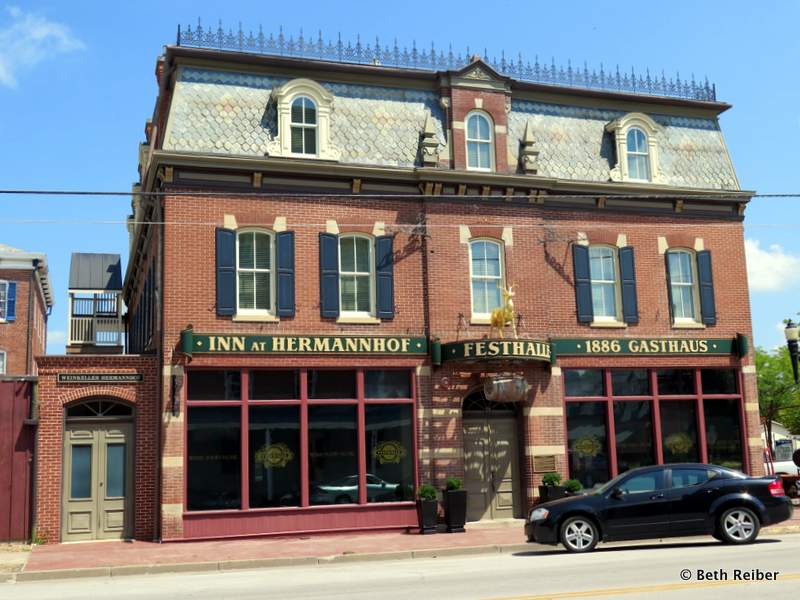
Today, Hermann is home to some 2,400 residents and lists more than 150 buildings on the National Register of Historic Places. With street names like Schiller, Goethe, Mozart, and Gutenberg alongside Washington and Jefferson, it’s a lively tourist town, with restaurants serving German and American cuisine, shops selling antiques and novelty items, and lodging that includes mostly bed-and-breakfasts and guest houses, many located in historic buildings with Old World charm. Local businesswoman Kay Schwinke told me that Hermann receives lots of visitors of German ancestry, which certainly includes me. In fact, I’ve visited Hermann at least four or five times, on girlfriend and romantic getaways. And although steamboats no longer deposit visitors in Hermann, Amtrak’s Missouri River Run stops here on its journey between St. Louis and Kansas City. As in the days of yore, Hermann’s wineries are the biggest draw. Events are held throughout the year, including special weekends at area wineries, Wurstfest in late March featuring all things sausage, and a spring Maifest celebration in May. Hermann’s biggest festival is its annual Oktoberfest held every weekend in October, with German music, dancing, food and other events.
The Hermann Wine Trail

It took a few decades after Prohibition ended, but by the 1960s grapevines again appeared in the Missouri Rhineland, followed by the slow reopening of wineries. Today, seven wineries in and around Hermann, which together comprise the Hermann Wine Trail, account for more than a third of the state’s wine production. Norton, America’s oldest native grape still in commercial use and honored as Missouri’s state grape, is used to make Hermann’s famous full-bodied red wines. Wineries also produce many other varieties, including reds like chambourcin, whites like the fruity vignole and dry vidal blanc, and rosés like Pink Catawba, made with the native Catawba grape.

Of the seven family-owned wineries along the Hermann Wine Trail, no name is bigger than Stone Hill Winery. Perched on a hill overlooking the town, Stone Hill was established in 1847, making it Missouri’s oldest winery. It was once the second-largest winery in the country and the third-largest in the world, its wines winning gold medals at eight world’s fairs, including Vienna in 1873 and Philadelphia in 1876. Today it attracts visitors from around the globe for its tastings and tours, which include visits to the historic 1869 main building and a peek at the largest series of arched cellars in America. On its grounds is also one of my favorite dining venues, Vintage Restaurant, located in the winery’s former carriage house and barn and serving German and American dishes paired with Stone Hill’s wines.

Not to be outdone is Hermannhof, with an attractive main brick structure and 10 arched stone cellars completed in 1852. White-oak casks from Missouri and France age wines in its old cellars, while other cellars are devoted to sparkling wine made in the classic French méthode champenoise.
Adam Putcha Winery, established in 1855, claims to be the oldest continuously owned family winery in the country. Other wineries on the 20-mile Hermann Wine Trail, which stretches between Hermann and New Haven along the Missouri River, include OakGlenn Winery, spread high on a bluff overlooking the river with great views from its outdoor terrace and live music on weekends; Bias Winery, which operates as both a winery and brewery; and Robbler Vineyard, a small family affair open since 1988 in New Haven.
The German in Hermann, Missouri

One of the most imposing buildings in Hermann is the former German School, now a museum devoted to Hermann’s early history. Serving as a public school from 1871 to 1955 (classes taught in German became verboten in 1914 with the start of World War I), its seven rooms display period clothing, furniture, farm and carpentry tools, telephone switchboards, early local red-ware pottery, newspaper clippings, toys, quilts, musical instruments, wall decorations fashioned from human hair (usually made as a way to memorialize a loved one), wine-making equipment, rifles, and memorabilia from steamboat days. You can also see the mechanism behind the school’s clock tower, added in 1890 apparently through the efforts of a determined Mrs. Carolyn Graf. An employee at the newspaper office, she had grown increasingly annoyed by all the people stopping by to ask “Wieviel Uhr ist es?” For the past 130 years, the town clock has served as a communal timekeeper, chiming every hour on the hour and wound by volunteers twice a week by hand to keep it on schedule.
It was at the Deutschheim State Historic Site with its two 19th-century homes offering an intimate look at the daily life and traditions of Hermann’s early settlers that I recognized shared traits, including frugality, practicality, and exactitude. To take advantage of city lots measuring 60 by 120 feet, the pragmatic and thrifty Germans built their homes as close to the street as they could, so as not to waste an inch of backyard devoted to gardening, livestock, and other productive uses. I found the 1840 Pommer-Gentner House, built for a family that handcrafted violins and pianofortes and filled with period furniture, especially interesting for its traditional four-square garden laid out in rigorously straight lines; I, too, have a similar four-square layout in my yard. In the old days, the Germans would have planted among other things asparagus, cabbage, garlic, onions, medicinal and cooking herbs, and fruit trees grown from seeds. Today’s visitors can view heirloom plants and learn traditional German gardening practices such as crop rotation and organic fertilizers.

The more modest Carl Strehly House, built in 1842 and modified and expanded over the years, was occupied by the same family until 1962 and remains virtually unchanged since the 19th century, right down to its original furnishings and attached winery with a vaulted brick cellar, handmade casks, and century-old grapevines.
Visitors interested in learning more about early farming techniques and trades can also visit the Hermann Farm & Museum, a living history center on a 200-acre historic working farm. In addition to restored buildings that include an 1850s log cabin, stone houses, and the 1851 main house with original woodwork, it is also home to Shire draft horses and other livestock, holds artisan demonstrations ranging from blacksmithing to horseshoeing, and contains a smoke house, distillery and barn.
As for George Bayer, in the end he was proven right. In fact, he was probably the most insightful German in Hermann, Missouri. His choice of the Missouri Rhineland with its high elevation and vertical drops offered the perfect habitat for growing grapes, without which Hermann would not be the quaint wine destination it is today. In 1986, during the 150th anniversary of founding of Hermann, Bayer was formally exonerated and cleared of charges he was incompetent. Frankly, I’m wondering why it took so long, though I suppose Germans could never be accused of acting in haste.

For more on Missouri small towns, see my blog on Rocheport. For more on the Hermann Wine Trail, see my article Explore one of the most underrated wine trails in the United States, published at 10Best.com/USA TODAY.
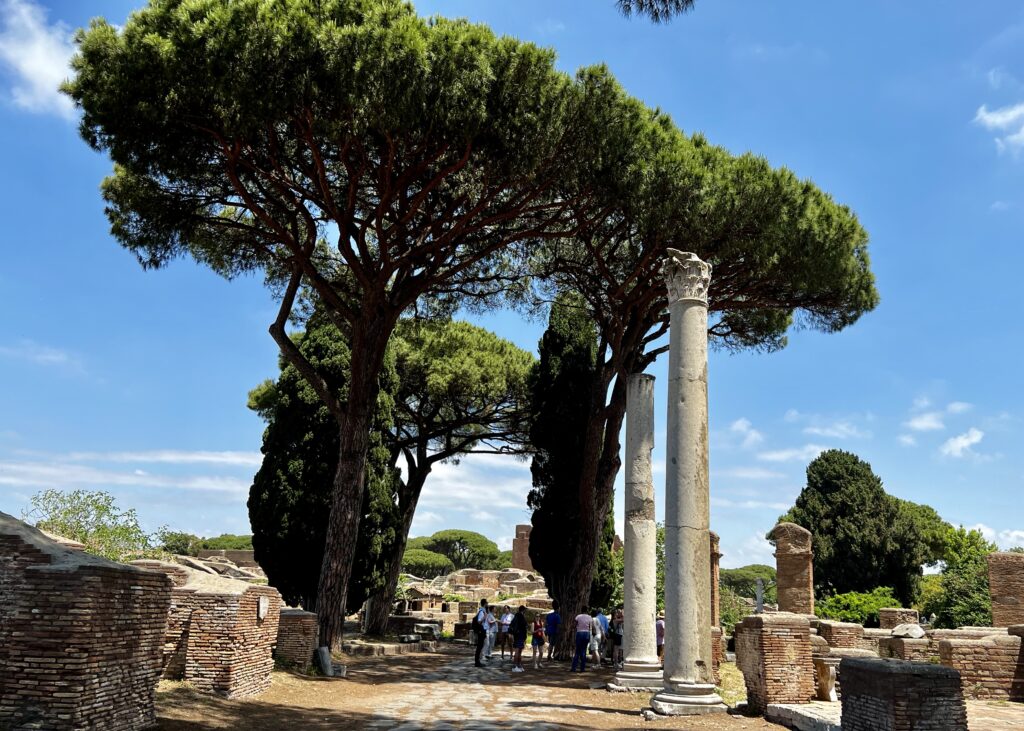
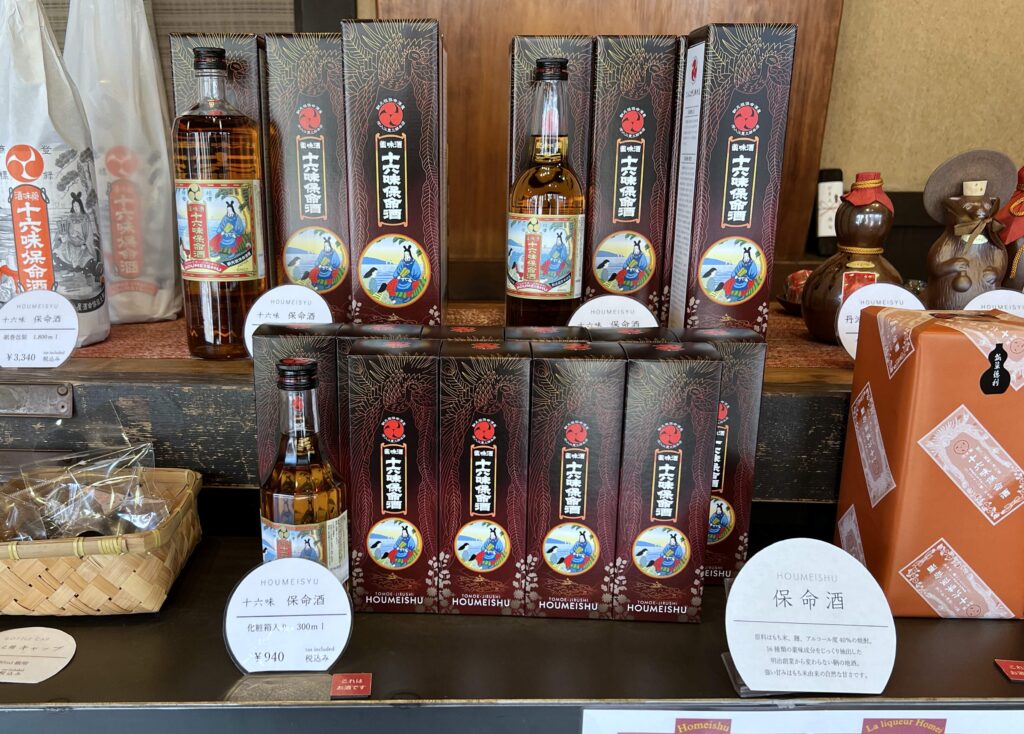

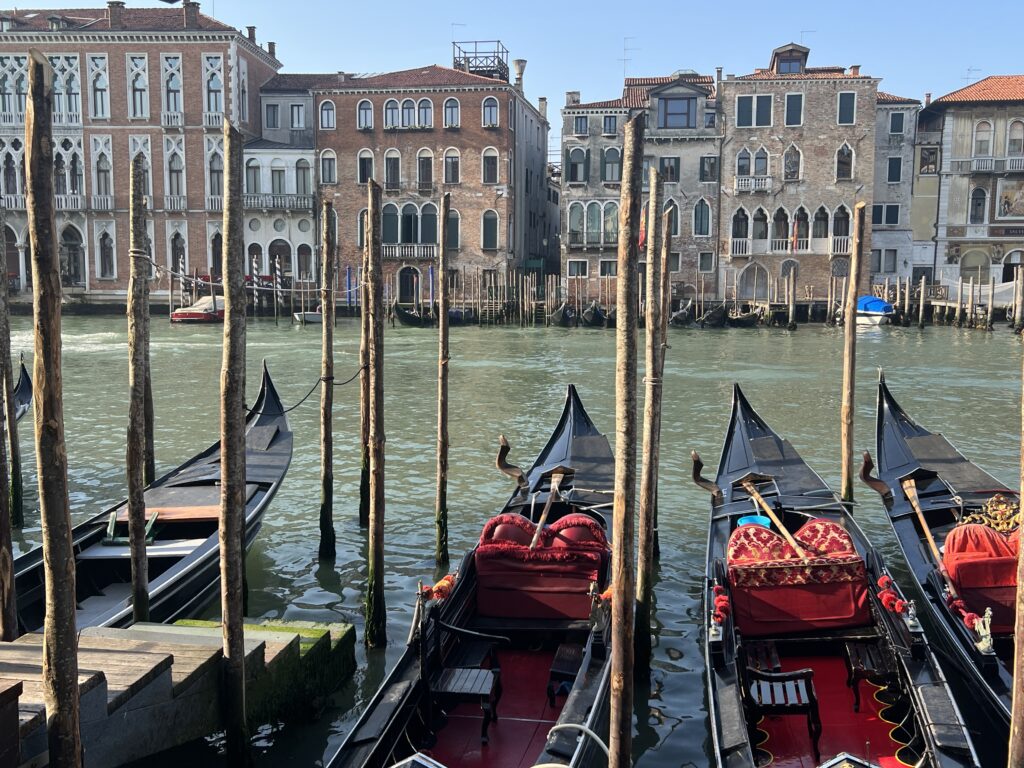


Great article!